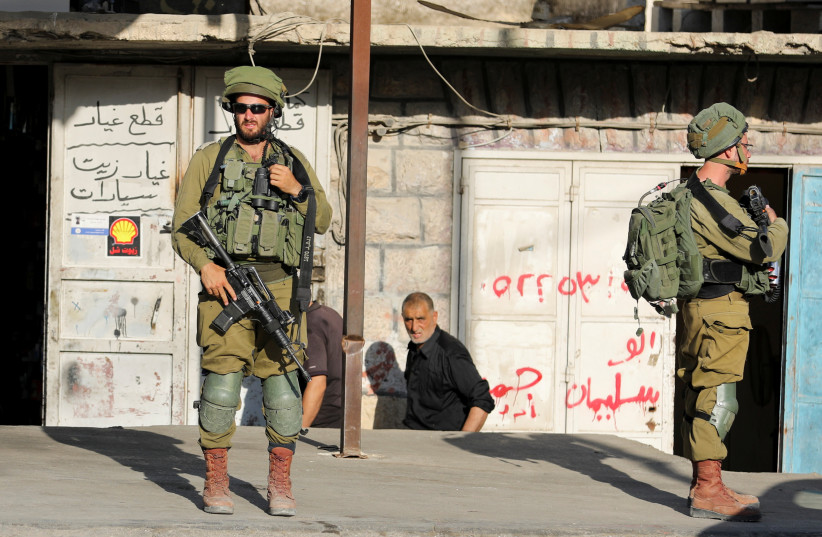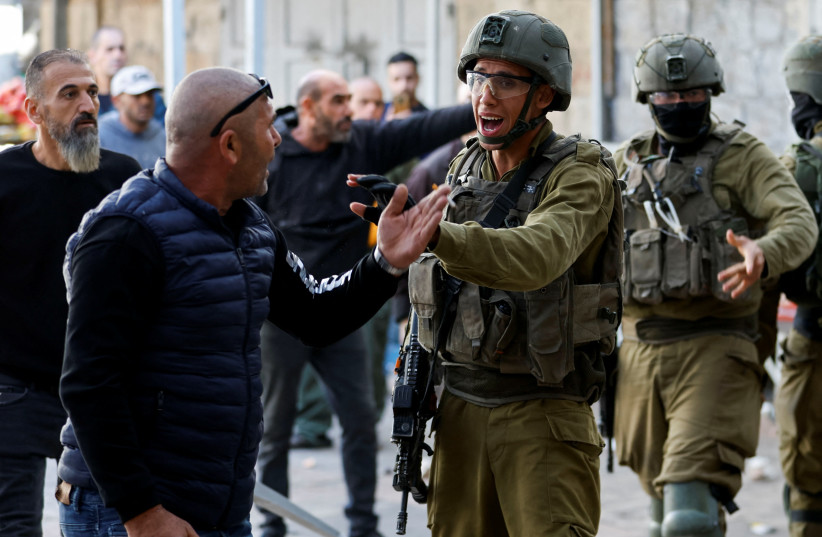Why I spent Yom Kippur protecting Palestinian villagers from settler violence – opinion
When I was 18 years old, like many American Jews, I spent a gap year in Israel. At a right-wing army-prep program called Mechinat Yeud, located in the illegal settlement of Efrat, I learned Torah, went on hikes, and practiced krav maga. I fondly look back at this year as a positive experience and a time when I matured as a young adult.
I also saw the daily mechanisms of the occupation, though I didn’t have the vocabulary to articulate this.
Over that year, I saw Palestinians whose cars bore different license plates than those driven by Jews. I saw a checkpoint between Israel and the West Bank that was a formality to Jews like my friends and me but very real to the Palestinians living right next to us. Though I finished my year in Yeud with a strong desire to live in Israel, I also knew that I couldn’t be complicit in Palestinian oppression.
I eventually moved to Israel and threw myself into anti-occupation activism, spending weeks and months at a time in Palestinian communities in the West Bank. In addition to the bureaucratic oppression that Palestinians face on a daily basis, I saw — and sometimes was a victim of — the settler violence that plagues the West Bank.
During the American civil rights movement, Rabbi Abraham Joshua Heschel famously referred to his protesting as “praying with his feet.” This past Yom Kippur, when the rabbis of the Talmud tell us to fully prostrate ourselves during prayer, I asked for forgiveness with my whole body by spending the Day of Atonement in Ein Rashash, a Palestinian Bedouin shepherding community located 22 miles northeast of Ramallah. Its residents had requested a 24/7 presence from solidarity activists due to threats from the nearby Israeli outpost of Malachi Hashalom.

According to a United Nations report released on Sept. 21, 1,105 Palestinians fled their homes and villages in 2022 and 2023. The report stated that settler violence is at a record high since the UN began documenting the trend in 2006.
This report includes the villages of Ein-Samia, Al-Qabun, al-Baqa and Ras al-Tin. All of these villages were located near Ein Rashash, and like Ein Rashash, the communities all relied on shepherding for their livelihood. Settler attacks in the Palestinian towns of Huwara and Turmus Aya, frequently described as pogroms, have received attention within Israel and internationally.
Ein Rashash has faced similar settler violence and harassment. Shortly upon entering the village, one can see where settlers shattered the windows of homes and destroyed an outhouse in an attack in June. The community is considering leaving their land just like the community of Ein-Samia and many others have done.
In response to this violence, a group of activists, most notably Rabbi Arik Ascherman, is spending long periods of time in Ein Rashash — located north of the ruins of Ein-Samia — to use our privilege as a de-escalating presence.
When non-Palestinian activists are around, settler violence is less likely. Ein Rashash and the nearby villages are all located in Area C, the portion of the West Bank under full Israeli control as per the Oslo Accords. The Palestinian residents do not have Israeli citizenship, and they are subject to military law as opposed to the civil courts through which Israeli settlers are tried. “Protective Presence” activism is utilized in other communities in Area C that face regular threats of settler violence and home evictions, such as Masafer Yatta. I have done several shifts already, and I volunteered for the Yom Kippur shift.
I was accompanied by five other activists. The first thing we did was assign roles in case settlers came. Who would call the police or other activists? Who would film? Who would stand in front of a settler’s car if he tried to enter the village or drive through a flock of sheep? These are normal conversations in this line of work.
There is no break during Protective Presence activism. Either there’s an immediate incident, or you’re waiting for the next one. Every unfamiliar car or person in the distance can be a settler coming to attack or harass or bringing soldiers to force Palestinians off their land. A drone from the nearby outpost hovered overhead for around 30 seconds, and I was on edge for the next hour. You sleep with one eye open. Jewish holidays often bring with them right-wing violence in Israel and the West Bank. Hate crimes were carried out in Bat Yam this year and last year, and in 2021 there was a settler pogrom in the Palestinian village of Mufagara.
This is exhausting and emotionally draining. Unlike many other Protective Presence shifts I have participated in, Yom Kippur ended without incident.
After 25 hours, I had the privilege of going home to Jerusalem. Palestinians do not have this option. This is their life.

According to Torah, on Yom Kippur, the Israelites are told to “afflict themselves.” The rabbis concluded that self-affliction must refer to fasting, reasoning that “affliction” refers to something that, when taken to a certain extent, can lead to death.
Life under occupation can, and does, lead to death. One look at the statistics makes that all too clear. Since 2000, 10,667 Palestinians in the occupied territories have been killed by Israeli soldiers or civilians.
Enjoying a home-cooked meal on Yom Kippur
Protective Presence is my self-affliction. And yet, in homage to Yom Kippur’s imagery of being sealed in the Book of Life, life goes on. Activists laughed with and got to know each other and our Palestinian hosts. We read and we ate delicious homemade food. We didn’t embrace misery as a form of repentance. We embraced the full spectrum of life.
I believe fasting is mentally, physically, and spiritually unhealthy. The only self-affliction I find meaningful is in sharing the pain — and the joy — of my fellow human beings, particularly in a way that lightens their pain and suffering. The people of Ein Rashash have told us that our presence is making their lives easier and helping them stay on their land. The children are laughing and playing in a way that they were not when we first started these shifts. This has been the most meaningful Yom Kippur I’ve ever had.
In Mishnah Yoma 8:9, we learn that repentance on Yom Kippur only allows us to atone for the sins between ourselves and God. For a sin against another person, one must “satisfy their fellow.” We don’t need to ask God for forgiveness. We must stand with the Palestinians suffering under Israeli rule until they’re satisfied.
I know that it’s not a matter of if the settlers will be back, but when. For as long as that’s the case, I will continue to pray with my body and sometimes “self-afflict” in the name of justice and equality. The Talmud states self-affliction does not absolve one from their sins towards other people, only those towards God.
And yet, our sins towards other people are the ones for which we direly need to repent.
The views and opinions expressed in this article are those of the author and do not necessarily reflect the views of JTA or its parent company, 70 Faces Media.





Comments are closed.